#firebase flutterflow
Explore tagged Tumblr posts
Text
Hire Professional FlutterFlow Developers: Transforming Your App Ideas into Reality
In today's competitive digital landscape, having a high-quality mobile app is crucial for business success. FlutterFlow, a leading low-code development platform, allows for the rapid creation of visually appealing and functional mobile applications. To fully leverage this powerful tool, Hire Professional flutterflow developers is essential. This article explores the benefits of hiring expert FlutterFlow developers, key skills to look for, and tips for finding the right talent for your project.
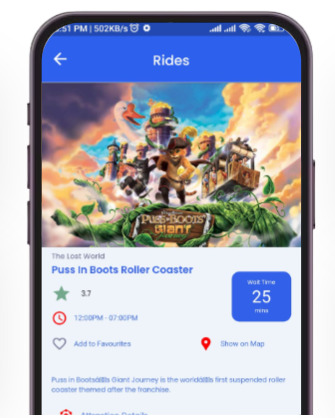
Benefits of Hiring Professional FlutterFlow Developers
Expertise and Efficiency:
Professional FlutterFlow developers have in-depth knowledge of the platform, enabling them to build robust applications quickly and efficiently. Their expertise ensures that your app is developed to the highest standards, with optimal performance and reliability.
Cost-Effective Development:
Leveraging the low-code nature of FlutterFlow, professional developers can reduce development time and costs significantly. This efficiency translates to lower overall project costs without compromising on quality.
High-Quality User Interfaces:
Expert developers can create visually stunning and intuitive user interfaces, enhancing the user experience. Their ability to design user-friendly layouts and seamless navigation is critical for user engagement and retention.
Custom Solutions:
Professional FlutterFlow developers can tailor your app to meet your specific business needs. Whether you require custom features, integrations, or unique design elements, their skills ensure that your app stands out in the market.
Ongoing Support and Maintenance:
Hiring professionals ensures that your app receives continuous support and updates. They can quickly address any issues that arise and implement new features as your business grows, ensuring your app remains relevant and functional.
Key Skills to Look for in FlutterFlow Developers
Proficiency in FlutterFlow:
Look for developers with proven experience in using FlutterFlow. They should be comfortable with its drag-and-drop interface, widget customization, and backend integrations.
Strong UI/UX Design Skills:
Developers should have a keen eye for design and understand user experience principles. Their ability to create attractive and user-friendly interfaces is essential for the success of your app.
Technical Expertise:
In addition to FlutterFlow, developers should have a solid understanding of programming languages like Dart and be familiar with backend development, API integration, and database management.
Problem-Solving Ability:
The ability to troubleshoot and resolve issues efficiently is crucial. Developers should be adept at finding innovative solutions to technical challenges.
Effective Communication:
Strong communication skills are vital for understanding project requirements, providing updates, and collaborating with your team. Clear communication ensures that your vision is accurately translated into the final product.
Tips for Hiring the Right FlutterFlow Developers
Define Your Project Requirements:
Clearly outline your app's goals, features, and functionalities. This will help you identify developers who have the relevant skills and experience to meet your specific needs.
Review Portfolios and Case Studies:
Examine the portfolios and case studies of potential developers to assess their expertise and the quality of their previous work. Look for projects similar to yours to gauge their capability.
Check References and Testimonials:
Contact previous clients to gain insights into the developers' reliability, work ethic, and ability to meet deadlines. Positive testimonials are a good indicator of their professionalism.
Conduct Technical Interviews:
Evaluate candidates' technical skills through interviews and practical tests. Ask them to demonstrate their knowledge of FlutterFlow and their approach to common development challenges.
Assess Cultural Fit:
Ensure that the developers align with your company’s values and work culture. A good cultural fit enhances collaboration and project success.
Consider Freelancers and Agencies:
Depending on your project scope and budget, you may opt for freelance developers or partner with a development agency. Agencies often provide a team of experts and comprehensive project management services.
Conclusion
Hiring professional FlutterFlow developers is a strategic investment that can significantly elevate the quality and success of your mobile application. With their specialized skills and experience, these developers can bring your app ideas to life efficiently and effectively. By carefully defining your project requirements, reviewing candidates' portfolios, and conducting thorough interviews, you can find the right FlutterFlow developers to help you create a standout app that meets your business objectives and delights your users.
For more info. Visit us:
Flutterflow expert
Flutterflow agency
Flutterflow consultancy services
0 notes
Text

Discover how to build powerful, scalable apps using FlutterFlow Firebase integration no coding needed. Speed up development with real-time back-end support.
0 notes
Text
Flutterflow App Development Agency That Transforms Ideas Fast

In a world where speed, precision, and innovation determine success, waiting months for a mobile app to launch is not just inconvenient—it’s a death sentence for your business momentum. If you're tired of broken timelines, ballooning budgets, and endless developer back-and-forth, it's time to rethink your approach. Welcome to Flutterflowdevs, the Flutterflow App Development Agency that’s revolutionizing how apps are built—and how fast they reach the market.
The Future of App Development Is Now
The traditional development cycle is outdated. It’s bloated with inefficiencies, miscommunication, and delays. Flutterflowdevs breaks that cycle with a streamlined, design-to-deploy process using the power of FlutterFlow—the cutting-edge visual app builder built on Google’s Flutter framework.
As a Flutterflow App Development Agency, Flutterflowdevs delivers speed, flexibility, and pixel-perfect results. We don’t just build apps. We craft digital experiences that make your business unforgettable.
Why Flutterflowdevs? Why Now?
Let’s be blunt. Your competitors are already looking for faster ways to launch and iterate. If you're not ahead, you’re invisible. Flutterflowdevs exists to give founders, entrepreneurs, and enterprise innovators a distinct, unfair advantage in an oversaturated digital marketplace.
Our promise is bold but simple: launch your fully functional, scalable app in a fraction of the time traditional agencies take. No more endless meetings. No more buggy MVPs. Just real results—fast.
What Sets Flutterflowdevs Apart?
We’re not just a FlutterFlow app builder. We’re a full-service Flutterflow App Development Agency driven by results and obsessed with innovation. Here's what you get when you work with us:
1. Lightning-Fast Turnarounds
From concept to launch, we move faster than any traditional agency. Thanks to FlutterFlow’s powerful no-code interface and our expert team of developers, designers, and strategists, you could have a production-ready app in as little as 3 weeks.
2. Full Customization, Zero Compromise
Forget cookie-cutter apps. We build tailored, branded, high-performance apps that align perfectly with your business goals. You dream it—we design it, code it, and launch it.
3. Cost-Efficiency That Doesn't Cut Corners
With traditional agencies, you're paying for their inefficiencies. With Flutterflowdevs, you're paying for results. Our process cuts development costs by up to 60%—without sacrificing quality, speed, or scalability.
4. Cross-Platform by Default
Why build separate iOS and Android apps when you can have both? With FlutterFlow’s Flutter-based engine, every app we build works beautifully across all platforms—web, mobile, and tablet.
5. Built-In Scalability
Whether you're launching an MVP or planning global domination, our apps are designed to scale. We build with clean architecture, Firebase integration, custom APIs, and secure backend solutions that grow with your business.
Who We Serve
Our clients include visionary startups, ambitious solo founders, growth-hungry SaaS companies, and enterprise brands ready to disrupt. If you have a bold idea and a burning desire to launch fast, you’re our kind of partner.
Whether you're creating a fintech tool, social platform, productivity app, or something entirely new, Flutterflowdevs is the Flutterflow App Development Agency equipped to bring your idea to life at warp speed.
The Clock Is Ticking—Here’s Why You Need to Act Now
Every day you wait is a day someone else launches. In today’s app economy, being late means being irrelevant. Users are hungry for new, seamless experiences—and if you're not delivering, they’ll find someone who is.
The market doesn’t wait for slow thinkers. At Flutterflowdevs, we turn ideas into living, breathing apps before your competitors even finish wireframing.
For More Details You Can Visit Us:
Flutterflow Web Development Agency
Top Flutterflow Development Company
Flutterflow Developer
0 notes
Photo
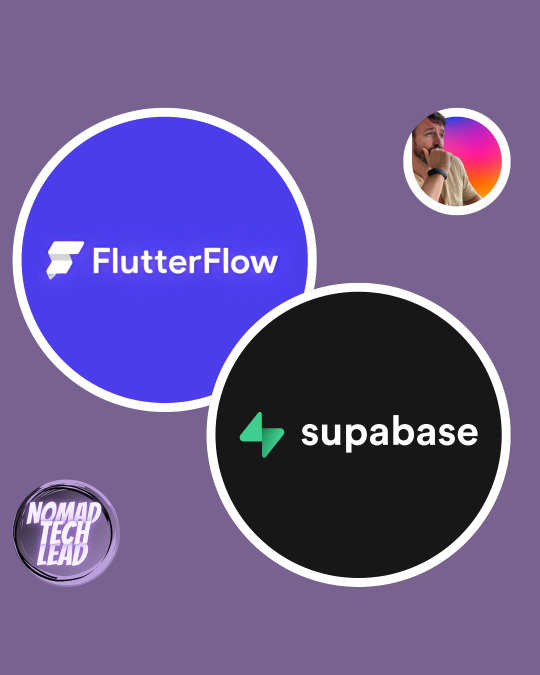
Due strumentini del cuore: FlutterFlow permette di creare app super carine e responsive per Android, IOS e Desktop, il tutto in un unico sviluppo. Potete anche integrare codice, API e appoggiarvi a Firebase o Supabase come DB, Storage e sistemi di autenticazione. Supabase è appunto un’alternativa di Firebase (di Google). Super comodo, super leggibile e customizzabile. Con le idee ben chiare, viene su un app in meno di una settimana, senza scrivere una riga di codice #thinkgoodspendless #lowcode #nocode #developer #nomadtechlead
0 notes
Text
Mobile App Development work from home job/internship at Swalook Global Private Limited
About the work from home job/internshipSelected intern’s day-to-day responsibilities include:1. Build and maintain websites using HTML, CSS, JavaScript, and WordPress 2. Design and develop apps using Flutterflow and Flutter 3. Create and share prototypes with Figma 4. Fix bugs and optimize performance 5. Stay updated on new tools and best practicesSkill(s) requiredAndroid APIs Figma Firebase…
0 notes
Text
Mobile App Development work from home job/internship at Swalook Global Private Limited
About the work from home job/internshipSelected intern’s day-to-day responsibilities include:1. Build and maintain websites using HTML, CSS, JavaScript, and WordPress 2. Design and develop apps using Flutterflow and Flutter 3. Create and share prototypes with Figma 4. Fix bugs and optimize performance 5. Stay updated on new tools and best practicesSkill(s) requiredAndroid APIs Figma Firebase…
0 notes
Text
How to Create An App and Make Money in 2024

Mobile applications have emerged as a critical business tool, providing businesses with another platform for sales generation, service enhancement, and income creation. The emergence of these mini devices has started eclipsing the use of powerful desktop/laptop devices, and hence, faster development of mobile applications has occurred.
Whether your goal is to improve services or sell products, the ultimate objective is often to make money from apps. On the other hand, there ought to be a well-conceived plan even before one sets out to develop an application.
This article describes the entire process of creating a mobile application with income-generating goals. If you don’t know how to proceed with the steps of developing an app, do not worry, as we have already done a comprehensive write-up on how to build a mobile app.
What’s the need of this guide?
A lot of people think their businesses will start making money the moment they take them online. But that is not true. The online market is as much competitive as the physical one. Therefore, when design, development, and marketing of such an application is carried out, the assumption of being present alone is not enough.
We have compiled useful information for people interested in making money from application creation. This guide will include popular monetization models for mobile developers to consider.
Let’s start with how to earn money by developing a mobile application. There are four ways to earn money with mobile application development.
How do You Make Money by Creating an App?
Mobile app development has become a lucrative field, with numerous opportunities to earn money through various monetization methods. The upcoming section will explore popular strategies for generating revenue from your mobile apps.
Whether you’re a third-party service provider or aiming to sell services directly through your app, choosing the right monetization approach is crucial. The success of your app’s revenue generation depends on aligning your monetization strategy with the type of app you’re developing.
When you develop a mobile app, you can choose different monetization options to start earning money. You can make money through the following methods. If you are not selling any services or products, then you can still earn money. Let’s look at some popular ways to earn money with mobile app development.
Application Development Platforms

Native Development Platforms
iOS (Swift/Objective-C): This platform is specifically for developing applications for Apple devices. It offers high performance and access to all device features, but requires separate codebases for iOS and Android.
Android (Java/Kotlin): Similar to iOS, Android development allows for deep integration with device features. However, it also requires managing two codebases for cross-platform functionality.

Cross-Platform Development Tools
React Native: Developed by Facebook, React Native allows developers to use JavaScript to build mobile applications for both iOS and Android. It combines the performance of native apps with the efficiency of web technologies.
Flutter: Google’s Flutter uses the Dart programming language to create natively compiled applications for mobile, web, and desktop from a single codebase. It is known for its expressive UI and fast performance.
No-Code/Low-Code Platforms
Adalo: Adalo is a user-friendly platform that allows you to build native apps for iOS and Android without writing code. It offers a wide range of templates and components to help you create visually appealing apps.
Bubble: Bubble is another no-code platform that enables users to create web applications with drag-and-drop functionality, focusing on rapid development and deployment.
FlutterFlow: This platform leverages Flutter’s capabilities to provide a visual interface for building cross-platform apps. It offers a drag-and-drop builder and integrates with Firebase for backend services.
Looking for a Mobile App Development Partner? We’re Here to Help!
Creating a app and monetizing it requires a strategic approach. Start by identifying a problem that your app can solve and targeting a specific audience. Design a user-friendly interface and prioritize performance.
If you’re looking to build a custom mobile app to earn money, look no further! Brilworks offers cost-effective mobile development services across various industries, including healthcare, fintech, media, and entertainment.
To Learn More, Read This Article:
0 notes
Text
How We Delivered a Scalable and Secure Messaging App for a Startup Using Flutterflow
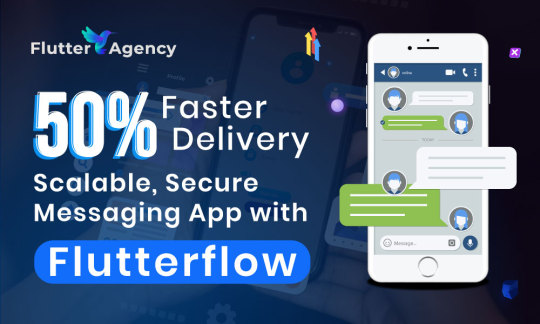
Messaging apps are now essential in many industries. These include healthcare, finance, social networking, and e-commerce. As businesses seek real-time communication, demand for messaging platforms is rising. They need them to be scalable, secure, and feature-rich.
Startups, in particular, must build an app that meets users' high expectations. It must also grow with their business and be very secure.
For startups, creating such an app can be complex. They must balance limited resources, tight timelines, and the need for rapid scalability. This is where a low-code platform like Flutterflow becomes invaluable.
Flutterflow is known for its developer-friendly interface and strong features. It provides a fast way to build cross-platform apps. It lets top app developers build scalable, secure messaging apps. It does this by enabling faster iterations and smoother integrations. This helps them work within startups' tight constraints.
Understanding the Startup's Requirements
A successful messaging app must enable real-time communication. Users must be able to send and receive messages instantly. For this startup, real-time messaging was crucial. But, the app also had to scale as the user base grew. Scalability means the app can handle more traffic as it gains users. It must do this without losing performance. Also, security is a critical concern. In today's world, data privacy is vital.
Building an app with these features, on a startup's tight budget, was a challenge. Startups often need custom app development services. It must be both powerful and cost-effective. The solution had to be both customizable and resource-efficient. It must meet the growing user demand without straining the startup's budget.
We needed a method for fast iterations, low overhead, and strong security. It also had to be flexible enough to scale as needed.
Why We Chose Flutterflow for This Project
We selected Flutterflow for several key reasons:
Rapid development:
A low-code platform that accelerates development by reducing manual coding.
Ideal for startups needing a fast time-to-market.
Cross-platform compatibility:
Single codebase for both iOS and Android.
It saves time and reduces costs by eliminating the need to manage separate versions.
Cost efficiency:
Low development and maintenance costs, making it budget-friendly for startups.
Easy scalability:
Scalable architecture that supports growth without requiring significant changes.
Integration with Firebase:
Real-time databases and secure user authentication are built-in for enhanced functionality.
Third-party API support:
Flexibility to integrate custom features and external services.
These factors make Flutterflow the best choice. Many top app developers prefer it to build secure, scalable apps within startup limits.
Designing the Architecture for Scalability
We designed a robust backend for the messaging app. It had to handle real-time communication. The focus was on performance and scalability.
The app's backend used a mix of cloud services and real-time databases. This allowed messages to be sent and received instantly. Using Firebase for real-time messaging, we ensured a smooth user experience, even at peak times.
Scalability was critical. So, we used the cloud. It could handle more users without slowing down. As user activity grew, the cloud services adjusted resources. This kept the app fast and responsive. We also optimized the database. It now retrieves and stores data efficiently. This helped the app scale effortlessly.
Flutterflow’s built-in tools were key. They ensured a smooth connection between the front-end and back-end. Its integration with Firebase lets us build a scalable, real-time system. It synchronized users. The platform's easy interface sped up development. The cloud architecture, database tuning, and Flutterflow's tools made a scalable app. It adapts to user growth. This is essential for any custom app development services or project.
Additionally, implementing these strategies not only enhanced the app's performance but also provided a foundation for future growth and adaptability. By leveraging advanced cloud services and real-time databases, we ensured that the messaging app could handle increasing user demands without compromising on quality or speed.
The seamless integration between Flutterflow and Firebase allowed us to efficiently manage and synchronize data across multiple devices, reinforcing the app's reliability and robustness. This holistic approach to development not only addressed immediate challenges but also set the stage for long-term success and scalability in the competitive messaging app market.
Implementing Security Features
Security was key in developing this messaging app. Users had to trust that their communications were private and protected. In any app with sensitive user data, secure communication is crucial. It prevents breaches, hacks, and unauthorized access. We ensured the app's architecture embedded data protection and privacy.
Messages fly between users, shielded by an invisible fortress. Our end-to-end encryption creates an impenetrable barrier, ensuring privacy reigns supreme in every exchange. Coded transmissions shield conversations, barring all but chosen eyes from deciphering their contents. No third party, not even the developers, can access them.
We used Firebase Authentication for user login. It is secure and reliable. It supported multiple authentication methods, like email and Google. This improved convenience without compromising security.
We enforced strict data protection protocols. They kept personal data and user interactions secure and compliant with privacy standards like GDPR and other local laws.
Our security measures ensured the app met the highest protection standards, on par with top mobile app development firms. This security helped the startup build user trust and comply with data privacy laws.
Performance Optimization for a Smooth User Experience
We refined the app for iOS and Android, ensuring a fluid experience across both platforms. Our optimization efforts aimed to create a seamless interface for all users. It was vital to ensure smooth performance on all devices. This was key to a high-quality messaging app for a diverse user base.
We began by implementing platform-specific optimizations to enhance app speed and responsiveness. For Android, we focused on memory and background processing. For iOS, we optimized rendering for smooth animations and transitions. Flutterflow's cross-platform features gave us the same performance on both OSs with little extra work.
As the app’s user base grew, we took measures to ensure it could handle increased traffic without compromising speed. We used caching to reduce server load. We optimized database queries. We efficiently implemented real-time updates. This combo lets us keep fast message delivery and app performance, even as more users join.
To ensure stability, we rigorously tested on many devices, screen sizes, and operating systems. Automated and manual tests helped identify potential performance bottlenecks and UI inconsistencies. This approach kept the app stable and responsive on all devices. It provided a smooth user experience.
We used these optimization techniques. They delivered a fast, reliable messaging app. It met the high standards of custom app development.
Overcoming Development Challenges
We faced key challenges in development. They were: handling high traffic, ensuring data sync, and maintaining message delivery. As the app grew, it became a priority to manage messages in real-time, without delays.
To address these challenges, we optimized backend processes. We improved load balancing and implemented efficient real-time messaging protocols. It was critical to sync data across users and devices. We achieved this by using Firebase's real-time database and Flutterflow's features.
Flutterflow's flexibility allowed us to quickly adapt to these challenges. Its low-code environment enabled rapid iterations. This helped us fix issues quickly. The platform's close tie with Firebase gave it a real-time chat system. It handled both traffic spikes and steady user growth. Flutterflow is popular with top mobile app development firms. Its responsiveness and adaptability suit complex, high-traffic projects.
The Results: A Scalable and Secure Messaging App
The final product met the startup's expectations. It delivered a scalable, secure, high-performing messaging app. Key features included real-time messaging for instant communication. It also had strong security to protect user data.
The app's ability to scale with a growing user base proved our work. We built a messaging app for a startup. It uses powerful tools and custom app development services. The app must grow with the startup. It must also maintain high performance and security as it expands.
Users well-received the app. They liked its smooth interface, fast messaging, and strong privacy. The startup was happy with the result. The app met its needs and set it up for future growth. This project meets the high standards of the best app developers. They deliver innovative, scalable solutions.
Final Thoughts
The project shows that Flutterflow was key to delivering a secure, scalable messaging app on a tight timeline. The platform's capabilities enabled rapid development and cross-platform integration. It also had robust security features. All were crucial for meeting the startup's needs.
Flutterflow's low-code environment lets us quickly fix issues. We also optimized the app for performance and scalability. Its integration with Firebase and its flexibility made it valuable in modern app development. It handled high traffic and data sync well. These benefits are why top mobile app development firms now use Flutterflow for reliable, innovative solutions.
Also, Flutterflow's technical benefits led to a more agile, collaborative process. The platform's simple interface improved communication between developers and stakeholders. It enabled quicker feedback and faster improvements. Collaboration was key. It ensured the app met specs and aligned with the startup's vision.
Looking ahead, Flutterflow’s potential extends beyond this project. Its quick adaptation and integration with third-party services make it a valuable tool for future app projects. For startups and established companies, using Flutterflow can streamline development. It can cut costs and ensure high-quality apps that meet current and future needs.
0 notes
Text
Become a Certified Flutter Developer with Edchart's Free Test
Unlock Your Potential with Edchart's Flutter Developer Certification Exam - Free Test
In the dynamic global of generation, staying ahead is paramount. Edchart, a worldwide chief in on line certification carriers, is devoted to empowering people by way of spotting their understanding thru online exams. Our partnership with CREDLY guarantees that your achievements are globally recounted and controlled with credibility. Explore our Flutter Certification offerings and take step one closer to unlocking your ability.
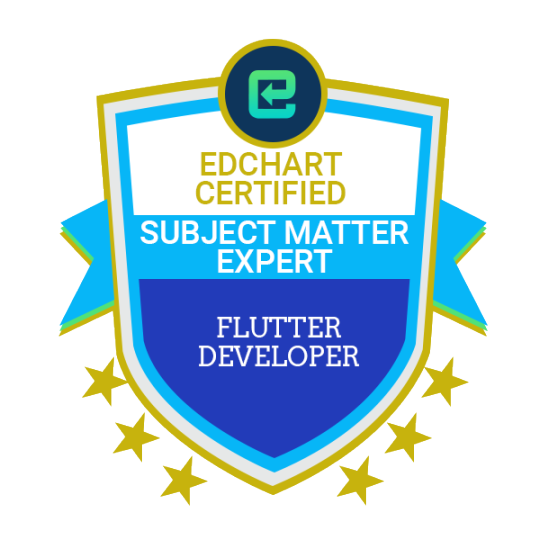
Advantages and Benefits of Edchart Certification
Recognition: Edchart Flutter App Developer certifications are diagnosed global, validating your knowledge and improving your professional credibility.
Career Advancement: With an Edchart Flutter Mobile App certification, you open doorways to new profession opportunities and advancement to your current function.
CREDLY Integration: Our partnership with CREDLY guarantees that your certifications are effortlessly shareable and verifiable, including fee in your professional profile.
Expert-Led Content: Our certification checks are designed by means of enterprise specialists, making sure relevance and comprehensiveness.
Flexibility: Take gain of our on line tests, Flutterflow Developers allowing you to have a look at and test at your personal pace and comfort.
Community Support: Flutter Firebase Join a thriving network of licensed professionals, networking and gaining knowledge of from like-minded individuals.
Scopes & Features of Edchart Certification
Edchart's Flutter Developer Certificationis designed to validate your skillability in Flutter, a famous framework for constructing move-platform programs. Our certification covers a huge variety of topics, together with:
Flutter Basics: Understand the fundamentals of Flutter framework, its architecture, and key principles.
Flutter Development Learn the way to broaden Flutter packages for cellular, internet, and desktop systems.
Firebase Integration: Explore Flutter Software to integrate Firebase services which include Firestore, Authentication, and Cloud Functions into your Flutter applications.
Flutter Testing: Master Flutter Application the artwork of checking out Flutter applications to make sure high-quality and reliability.
Performance Optimization: Discover techniques for optimizing Flutter applications for overall performance and efficiency.
Why Choose Edchart Certification?
Edchart Flutter Developer certification goes past just validating your talents; it empowers you to excel to your profession. Here's why you must select Edchart for your certification desires:
Quality Assurance: Our Flutter Dev certifications are meticulously designed and often updated to reflect the brand new enterprise tendencies and requirements.
Global Recognition: Edchart Flutter Flow certifications are respected international, establishing doorways to international profession possibilities.
Credibility: With our partnership with CREDLY, your certifications are backed by way of a relied on platform, making sure credibility and authenticity.
Flexibility: Study Flutter App and take a look at at your very own pace, with out compromising on your other commitments.
Community: Join a vibrant community of certified experts, where you may community, proportion information, and develop collectively.
Who Will Benefit from Edchart Certification?
Edchart certifications are ideal for:
Flutter Framework: Individuals trying to kickstart their profession in Flutter improvement.
Experienced Developers: Professionals looking for to validate their talents and advance their profession potentialities.
Entrepreneurs: Business proprietors and marketers seeking to construct their very own Flutter Web packages or lead development teams.
Students: Students interested in learning Flutter and improving their employability inside the tech enterprise.
Unlock your capacity with Edchart's Flutter Developer Certification. Take the free take a look at these days and embark on a journey towards achievement. Click here to get commenced.

Become a Certified Flutter Developer with Edchart's Free Test
Unlock Your Potential with Flutter Certification
Flutter Developer Certification from Edchart is recognized as the gold fashionable in validating understanding in Flutter Developer improvement. With our free check, you can kickstart your journey closer to turning into an authorized Flutter Developer . Take the check now and be part of the ranks of elite Flutter Developer s international.
Advantages and Benefits of Flutter Developer Certification
Industry Recognition: A Flutter Certification from Edchart is quite respected in the industry, showcasing your skillability in Flutter Development.
Career Advancement: Certification opens doorways to new profession possibilities and better-paying roles inside the tech enterprise.
Validation of Skills: By incomes certification, you validate your competencies and knowledge in growing sturdy Flutter Applications.
CREDLY Integration: Our partnership with CREDLY ensures that your certification is effortlessly shareable and verifiable, adding credibility for your professional profile.
Access to Resources: Certified builders benefit access to unique resources, networks, and task opportunities.
Continuous Learning: Edchart certifications inspire non-stop studying and skill development to live updated with the latest traits and technology in Flutter Development.
Scopes & Features for Flutter App Certification
Comprehensive Curriculum: Our Flutter App Certification covers all components of Flutter Development, such as fundamentals, superior functions, and satisfactory practices.
Hands-on Projects: Gain practical revel in thru hands-on initiatives and real-global eventualities to reinforce your competencies.
Expert-Led Content: Learn from industry experts who layout and curate the certification content to make sure relevance and comprehensiveness.
Interactive Learning: Engage in interactive learning reviews, quizzes, and exams to boost your knowledge of Flutter Development standards.
Flexibility: Study and put together for certification at your very own pace, with get right of entry to to on line resources and guide.
Exam Preparation: Get get entry to to exam coaching substances, practice exams, and mock assessments to enhance your self assurance before taking the certification examination.
Why Take Flutter Web Certification?
Flutter Web offers numerous advantages:
Cross-Platform Development: With Flutter Developer, you may construct internet programs that run seamlessly across distinctive structures, which include computer and mobile.
Single Codebase: Develop net programs with a unmarried codebase, decreasing improvement time and effort.
High Performance: Flutter Certification performance-optimized structure guarantees rapid and responsive net packages.
Rich User Interfaces: Create visually lovely and interactive consumer interfaces for net applications the usage of Flutter Application rich set of widgets and libraries.
Growing Demand: The call for for Flutter Web builders is at the upward push, making certification a treasured asset for career advancement.
Who Will Benefit from Flutter Software Certification?
Flutter Software Certification is good for:
Software Developers: Professionals seeking to decorate their skills and expertise in Flutter Development.
Web Developers: Individuals inquisitive about expanding their talent set to consist of Flutter Software for constructing net packages.
Mobile App Developers: Developers looking to leverage Flutter Mobile App for growing move-platform mobile packages.
Entrepreneurs: Business owners and marketers interested in constructing their personal Flutter App Developer -primarily based software program solutions.
Students: Students pursuing careers in software development and trying to focus on Flutter Programming generation.
Unlock your potential and end up a certified Flutter Developer with Edchart. Take the loose check now and embark on a rewarding career journey in Flutter Development.
0 notes
Text
1 note
·
View note
Text
NoCode, NoDev ? REX de ces outils.
La première fois que j'ai entendu parler du NoCode, c'était avant le Covid, début 2019 chez The Family. En cette année 2023 il est temps de faire un point et de savoir si les Devs sont morts...

Comme évoqué préalablement, c'est chez The Family qu'une personne m'a parlé d'un truc super "AirTable"... A l'époque je n'ai pas trouvé cela si "super". Pour moi c'était une base de données type mysql avec une couche web. Un truc qui mélangeait Google Sheet, un phpMyadmin et un "MS Access" on line.
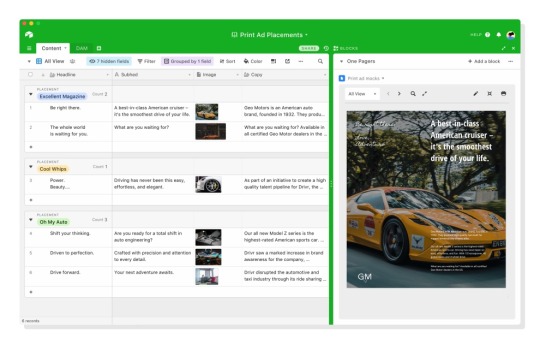
Même si le produit était déjà bien abouti, j'ai considéré à l'époque qu'avec google sheet on arrivait à faire la même chose... L'interface visuel d'Airtable permet de gérer une base de donnée sans rien connaître au SQL... Sur ce point il était vraiment "NoCode".
Mais durant la présentation de Airtable, l'intervenant a utilisé un autre outil. J'ai tout de suite compris l'importance de cette brique qui pouvait chaîner des API et/ou des webhooks. Cette brique était Zapier. En plus de la simplicité de son fonctionnement, le site Zapier apportait (et apporte encore) de nombreux articles sur l'utilisation des "Zaps". De retour chez moi j'ai tout de suite développé une feuille googlesheet qui scrapait les pronostiques hippiques de différents sites, qui faisait une synthèse et qui m'envoyait par mail le quinté le plus probable. Par la suite j'ai amélioré le système en faisant une comparaison par rapport à l'arrivée réelle du quinté et si j'avais joué, combien j'aurais pu gagner ou perdre... Évidemment tout cela automatisé par Zapier. Si cela vous intéresse, je vous renvoie sur cet article qui m'a inspiré pour ce projet. Pour moi, en réalisant ce petit programme, j'ai utilisé que des outils no-code. Avec les différentes évolutions, je n'ai pas passé plus de 2 jours à ces tâches (mais finalement je ne suis pas devenu millionnaire...).
En 2023, les outils "No-Code" d'automatisation sont des briques essentielles pour permettre une gestion cohérente des différents outils "SAAS". Plusieurs de ces outils permettent de créer de véritables workflows. On peut citer (en plus de Zapier) : Make ou encore IFTTT. Avec ces automatismes, on peut enchaîner un grand nombre de tâches sur de nombreux sites en SAAS mais attention de ne pas s'y perdre...

Avant de poursuivre, il me semble essentiel de préciser ce qu'est pour moi un outil "NoCode" : Il s'agit d'un outil ne nécessitant pas de création de code et permettant de créer des applications disposant de certaines logiques "métiers" spécifiques. Du coup j’exclus tous les outils qui fournissent des services packagés tel que la création de site web comme wordpress, carrd, Wix, squarespace ou encore strikingly mais aussi les e-boutiques comme podia ou shopify. Certains me diront que l'on peut configurer "aux petits oignons" ces outils sans aucun code, mais pour simplifier je considère que ces outils ont été créés pour des besoins spécifiques (Blog, E-commerce, landing page...). Cette précision étant faite, je peux continuer mon article.
Par contre le fait de créer des formulaires, d'utiliser des outils d'automatisations et d'alimenter un backend avec une certaine logique métier s'apparentent au "nocode". Et au début on avait bien cette séparation, on pouvait classifier les outils "nocode" suivant le modèle MVC (Modèle/Vue/Contrôleur). On avait des outils dédiés aux modèles (airtable pas exemple), aux contrôleurs (Zapier) et à la couche présentation (comme Typeform).
Lors du Covid, l'outil qui revenait dans les discussions était Glide. A l'époque l'outil ne permettait de travailler qu'avec une feuille google sheet et d'afficher les données. Certes on pouvait facilement prototyper une interface mobile mais cela restait une couche de présentation de données. Glide en s'appuyant sur google Sheet et par les API permettait de définir certaines "logiques" applicatives mais on était loin du "codage" d'une véritable application.
Mais très vite les outils "nocode" ont voulu tout faire. On m'a parlé alors de Bubble qui permet la création d'applications métiers. L'envers de la médaille est que pour bien comprendre les subtilités de cet outil il faut passer du temps. D'ailleurs certaines sociétés de formation ont vite compris la nécessité d'accompagner les utilisateurs pour prendre en main ces outils "nocode". Hors pour moi, un outil "nocode" doit être facile d'accès et aussi simple à gérer qu'une feuille excel. Sinon, le coût de la productivité se trouve fortement impacté.

Comme vous le comprenez, je n'étais pas très convaincu sur ces outils. Il faut dire que j'utilisais déjà des logiciels de programmation visuelle comme scratch ou App Inventor pour instruire les concepts de programmation aux plus jeunes. Même si ce n'est pas du "nocode" ces outils sont déjà évolués et permettent aux plus jeunes d'imaginer (et de programmer) des applications rapidement et de façon graphique.
L'objectif des outils "nocode" est surtout de permettre aux "sachants" des logiques métiers de facilement obtenir une application "simple" qui répond à certaines exigences. Comme le DevOps, le "nocode" doit permettre rapidement de délivrer un produit répondant à des besoins sans passer par des phases chronophages d'élaboration d'un cahier des charges, de recueil des règles "métiers" et surtout des nombreux échanges entre le développement et le "product owner". Le cycle pour concevoir cette application doit être court et l'itération rapide pour produire le projet fini. Le "nocode" permet de gérer ce sprint, faut-il encore que le client soit partie prenante dans la validation du produit.
Le frontend ou l'interface utilisateur et l'UX (expérience utilisateur) sont pour moi la base permettant de faire adhérer l'utilisateur. On peut griffonner sur un bloc-notes les maquettes des écrans. Puis imaginer l'enchaînement de ces écrans , mais là aussi les outils "nocode" ont simplifié la conception.

On va tout de suite citer Figma très connu des designer (pour découvrir cet outil suivez ce Tuto). Il existe aussi d'autres outils comme PenPot qui est Opensource mais on peut aussi utiliser des outils comme pencil ou drawio (que j'ai utilisé pendant un certain temps). A partir de la conception de cette Vue, j'en déduis le modèle de base de données puis les contrôles à appliquer. L'avantage c'est qu'en plus du design, Figma permet de faire des interactions pour simuler des transitions et ainsi avoir un prototypage. Cela permet de faire valider auprès du "client" en mode collaboratif, l'UX de l'application. Le "market" permet d'accéder à de très nombreux composants réalisés par la communauté. Il existe aussi un mode inspection qui permet aux développeurs de récupérer le code CSS généré par Figma. Cela permet d'accélérer le développement.
Mais l'idéal est peut-être d'avoir un outil qui puisse mélanger les trois concepts (MVC) de façon graphique. Et bien c'est ce que propose Adalo. A travers une interface, on définit les écrans et surtout l'enchaînement des écrans à travers les actions de l'utilisateur. J'ai découvert l'outil à l'été 2021 et dés le début j'ai été "bluffé". J'ai eu l'occasion d'expérimenter en situation Adalo : Je devais réaliser une application pour smartphone présentant différents lieux géographiques. L'utilisateur visitant ces lieux avait accès à des photos, des textes mais aussi des séquences audio pour découvrir les endroits indiqués sur une carte. Il pouvait également répondre à des énigmes tout au long de son parcours pour obtenir un code secret lui permettant de visiter gratuitement un lieu habituellement payant. Rapidement j'ai pu concevoir un MVP. Avec le "client" et par l'interface visuelle d'Adalo, j'ai corrigé "en direct" les remarques formulées. Certes je peux reprocher plusieurs choses à cet outil : Un backend (à l'époque) inclus dans l'outil, des templates asses limités, des tarifs récurrents... Mais le produit permet de gagner énormément de temps.
En 2022, et à l'aide de méthodologie comme le "Design Sprint", de nombreuses sociétés "nocode" sont apparues pour rapidement produire une applications à partir justement de la "Vue". D'ailleurs certains outils "nocode" récupèrent le design de Figma pour commencer à générer l'application. En 2023, il faudra que ces entreprises puissent se démarquer par rapport aux outils utilisés qui sont souvent les mêmes. Seules celles qui soigneront le design garderont leur place, à moins qu'on puisse personnaliser les applications générées...
Ainsi en 2022, j'ai découvert un autre outil : FlutterFlow. L'outil est extraordinairement puissant et très paramétrable, ce qui le rend un peu plus complexe qu'Adalo. Il s'appuie sur le backend Firebase qui a largement fait ses preuves. En plus de permettre de publier l'application générée vers les différents store, FlutterFlow vous permet surtout de récupérer le code source en Dart. Le code généré est "propre" et peut être utilisé pour apporter des modifications non prises en charge dans FlutterFlow.
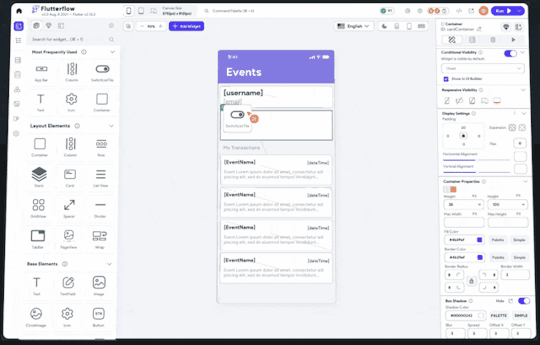
Cela est un gain de temps (et donc de productivité) pour le développeur qui n'a plus qu'à se concentrer sur les fonctions manquantes à programmer.
Mais 2022 a aussi été une évolution des outils historiques du "nocode". Ainsi Zapier a introduit la notion de tables ce qui permet de travailler les intégrations de données au niveau même de Zapier. Airtable a développé les vues et la gestion des accès sur ces vues. Avec ces nouvelles fonctionnalités, j'ai conçu une mini application sous Airtable utilisant de la géolocalisation. Chaque contributeur de cette application ne peut enrichir que les données affichées dans une vue qui lui est propre.
2022 c'est aussi l'arrivée de L'Open Source dans le "nocode". On trouve Supabase qui se veut un concurrent de Firebase. On peut aussi citer 8n8 qui est l'équivalent de Zapier ou encore des projets de clone de Airtable comme nocodb, baserow ou rowy sans parler des nombreux projets de conception de la partie Vue du "nocode" comme Builder.io ou Plasmic.
2023 verra de nouveaux outils "nocode" apparaître. Déjà ma liste d'outils à tester ne fait qu'augmenter. J'ai ainsi découvert WeWeb qui "semble" très prometteur mais aussi Zyllio qui ressemble fortement à Adalo avec des tarifs plus avantageux (et français). Des solutions très simples à prendre en mains et permettant d'exporter le code source comme moxly ou encore sizze font aussi parties de ma liste.
Il faut se rendre compte que le phénomène "Nocode" est en perpétuel évolution. De nouveaux outils sortent tous les jours. Pour 2023, les points essentiels à prendre en considération sont :
La facilité de prise en main de l'outil,
Le lieu d'hébergement des données et/ou la possibilité de choisir son backend,
La facilité d'obtenir le programme fini (comme par exemple le PWA, APK...) et de le publier,
La possibilité d'exporter le code/projet (sous GITHUB, ZIP...),
Et enfin la possibilité de payer à l'usage (et non être lié à un abonnement annuel...).
On pourrait aussi ajouter d'autres critères comme le SEO, l'accessibilité numérique ou la possibilité de travailler en équipe sur un projet.
Je vais arrêté là mon article. Je pense que le "nocode" est simplement une ramification d'un phénomène à l'origine du Devops. Je vous invite d'ailleurs à lire mes articles (dont le plus vieux date déjà de 10 ans) sur ce besoin d'accélérer la mise à disposition d'applications.
Pour répondre à la question du titre : "No Code, No Dev ?", je dirai que le "NoCode" n'est pas nouveau. Il a toujours existé. Dans les années 90 on parlait de développement RAD (rapid application development). Puis on a parlé des frameworks pour simplifier le travail de développeur en générant le code pour certaines fonctionnalités. L'arrivée des conteneurs et des chaînes CI/CD ont permis d’accélérer le déploiement en production. Cette évolution s'accélère aujourd'hui avec la démocratisation d'outils NoCode et prochainement avec IA. Le développeur n'est pas mort, son travail évolue vers plus de technicités et de concepts au plus proche des métiers. Il pourra s'appuyer sur des outils "nocode" pour améliorer des prototypes d'applications. En 2023, pour créer une page web et faire un formulaire qui enrichit une base de données, on n'a pas forcément besoin d'un développeur. Mais pour les J0 de 2024, on aura besoin de développeurs pour créer une application qui localise les taxis volant les plus proches, qui indique la durée d'attente, le prix de la course partagée et pour finir la réservation en la télétransmettant au taxi volant.

MAJ : Dans ma liste d'outils nocode, je viens d'ajouter goodbarber qui permet rapidement de créer une application "simple" sur les mobiles. Même si au niveau tarif, le produit est un peu cher, sa simplicité et le support font gagner du temps. Au niveau de l'entreprise, je préconise Ksaar qui permet de concrétiser les besoins métiers à travers un outil Nocode. Je précise que ces 2 outils sont français.
0 notes
Text
FlutterFlow Developers: Revolutionizing App Development
In the fast-paced world of app development, FlutterFlow has emerged as a powerful tool for creating visually stunning and highly functional applications. FlutterFlow, a visual development platform built on top of Google's Flutter framework, allows developers to design, build, and deploy mobile applications with ease. This guide explores the role of Flutterflow developers , their skills, and the impact they have on the app development landscape.
1. What is FlutterFlow?
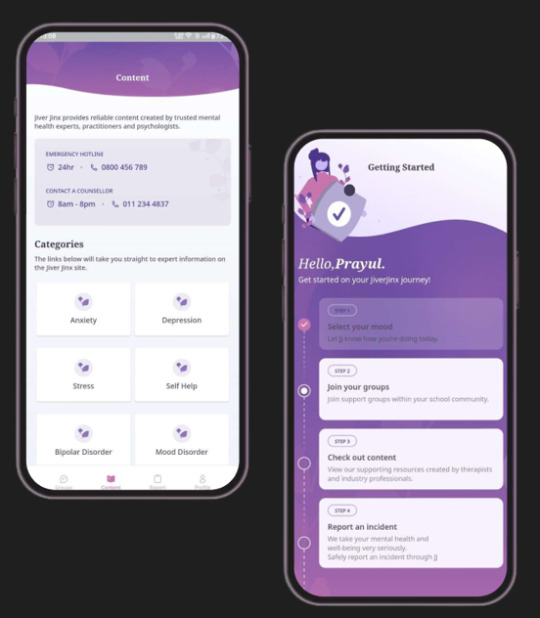
Visual Development Platform:
FlutterFlow is a low-code platform that enables developers to create apps visually using drag-and-drop components. It simplifies the development process, making it accessible to both seasoned developers and those new to app development.
Integration with Flutter:
Built on top of the Flutter framework, FlutterFlow allows for seamless integration with Flutter’s extensive capabilities. This means developers can leverage Flutter’s robust features while enjoying the ease of a visual builder.
2. Skills Required for FlutterFlow Developers
Proficiency in Flutter:
A strong understanding of Flutter and Dart (the programming language used by Flutter) is essential. This knowledge helps developers to customize and enhance the applications built using FlutterFlow.
UI/UX Design:
FlutterFlow developers need to have a good eye for design. They should be adept at creating intuitive and visually appealing user interfaces that provide an excellent user experience.
Problem-Solving Skills:
Developers must be capable of identifying and solving issues that arise during the development process. This includes debugging and optimizing the performance of the app.
Understanding of APIs and Integrations:
Knowledge of how to integrate various APIs and third-party services into FlutterFlow applications is crucial. This allows for the addition of complex functionalities such as authentication, payment gateways, and data storage.
3. Advantages of Using FlutterFlow
Speed of Development:
FlutterFlow significantly reduces the time required to develop an app. Its drag-and-drop interface allows for rapid prototyping and iteration, making it possible to go from concept to deployment quickly.
Cost-Effective:
By streamlining the development process, FlutterFlow helps reduce costs. Developers can create high-quality apps without the need for extensive coding, which can lower development expenses.
Cross-Platform Development:
Like Flutter, FlutterFlow supports cross-platform development. Developers can build applications for both iOS and Android from a single codebase, ensuring consistency across platforms and reducing maintenance efforts.
4. Impact of FlutterFlow Developers
Innovative App Solutions:
FlutterFlow developers are at the forefront of creating innovative app solutions. They bring ideas to life quickly, allowing businesses to stay competitive in a rapidly evolving digital landscape.
Empowering Non-Developers:
The ease of use of FlutterFlow empowers non-developers, such as designers and product managers, to contribute to the app development process. This democratizes app development and fosters collaboration.
Enhanced User Experiences:
With a focus on design and functionality, FlutterFlow developers create apps that offer enhanced user experiences. The result is applications that are not only functional but also engaging and user-friendly.
5. Future of FlutterFlow Development
Continued Growth:
As more businesses recognize the benefits of low-code development, the demand for FlutterFlow developers is expected to grow. This trend will likely lead to further advancements in the platform’s capabilities.
Community and Ecosystem:
The FlutterFlow community continues to expand, providing developers with resources, support, and opportunities for collaboration. This ecosystem fosters innovation and the sharing of best practices.
Conclusion
FlutterFlow developers play a crucial role in the app development industry by leveraging a powerful visual platform to create dynamic, cross-platform applications. Their skills in Flutter, UI/UX design, and problem-solving, combined with the advantages of FlutterFlow, enable them to deliver high-quality, cost-effective solutions. As the demand for innovative and efficient app development continues to rise, FlutterFlow developers are poised to shape the future of how apps are built and experienced.
For more info. Visit us:
Flutterflow app development
learn flutterflow
flutterflow app
0 notes
Text
Learn how to integrate APIs, databases, payments & services like Firebase, Stripe & AWS in FlutterFlow to enhance features and improve user experience effortlessly.
0 notes
Text
Flutterflow App Development Agency That Transforms Ideas Fast

In the digital age, speed and innovation win the race. If you're still stuck in endless development cycles or dealing with clunky codebases, you're already behind. The world is moving faster, and your business deserves a partner that can keep up. Enter Flutterflowdevs—the premier Flutterflow App Development Agency that turns your vision into a fully functional, high-performing app faster than you ever thought possible.
Why Flutterflowdevs is the Secret Weapon Your Business Needs
Let’s be honest—traditional app development is outdated. It’s slow, expensive, and packed with bottlenecks. Entrepreneurs and businesses with brilliant ideas often watch those ideas fade while waiting for developers to deliver.
That’s where Flutterflowdevs comes in. As a specialized Flutterflow App Development Agency, we don’t just build apps—we engineer digital experiences with blazing speed and pixel-perfect precision.
Flutterflow is revolutionizing the way apps are created, and Flutterflowdevs is leading the charge. We're not just using the platform; we’re mastering it to build production-ready, scalable apps in record time. Whether you're launching a startup, revamping an existing app, or looking to break into a new market, Flutterflowdevs is your shortcut to success.
The Power of Flutterflow, Unleashed
Flutterflow is the no-code/low-code platform that’s disrupting the app development industry. It empowers creators to build beautiful, responsive, and feature-rich apps visually—without wrestling with backend complexity. But here’s the kicker: just because it’s faster, doesn’t mean it’s less powerful.
When you work with a dedicated Flutterflow App Development Agency like Flutterflowdevs, you get the best of both worlds—speed and sophistication. We combine design, development, and deployment into a single streamlined process that cuts timelines in half and costs by as much as 60%.
You’re no longer waiting months for an MVP. With Flutterflowdevs, your app can be launched in weeks—sometimes even days.
We Don’t Just Build Apps. We Build Business Momentum.
Time is money, but speed without strategy is useless. Flutterflowdevs is not just another Flutterflow App Development Agency. We’re growth partners. Our team doesn’t just deliver a product; we align with your vision, your goals, and your target audience to create an app that performs.
From ideation to launch and post-deployment support, Flutterflowdevs provides a white-glove experience that puts your brand on a pedestal. Think of us as your all-in-one digital accelerator.
Here’s what sets us apart:
Lightning-Fast Turnarounds – We don’t drag our feet. With Flutterflow's visual builder and our elite expertise, we move from concept to prototype in days.
Code-Optional Development – Want full control? We can integrate custom code into your project to push Flutterflow’s boundaries and tailor every detail.
Design-Centric Thinking – Every screen is carefully crafted to maximize engagement, usability, and conversion. No templates. Only original, user-focused design.
Cross-Platform Excellence – Launch your app on iOS, Android, and Web without doubling your budget or development time.
Full-Stack Services – From Firebase backend integration to payment gateways and API setups, we handle the tech so you can focus on growth.
The Clock is Ticking—Your Competitors Aren’t Waiting
Still considering whether a Flutterflow App Development Agency is the right move? While you're reading this, your competition could already be deploying their next killer app.
The market doesn’t slow down for anyone. Whether you're a solo founder or an enterprise innovator, you need momentum. You need results. You need Flutterflowdevs.
Waiting means wasting opportunity. Every moment you delay, you risk losing market share, investor interest, and customer attention. But with Flutterflowdevs, you're not just catching up—you’re leaping ahead.
Let Flutterflowdevs be the spark that ignites your app’s potential. Schedule a free consultation today, and let’s build something extraordinary—fast.
For More Details You Can Visit Us:
Flutterflow Company
Flutterflow Agency
Flutterflow Development Company
Develop Mvp In Flutterflow
0 notes
Text
FLUTTERFLOW: EVERYTHING YOU NEED TO KNOW
You're likely already familiar with Flutter, Google's incredibly useful UI toolkit that has made creating apps much simpler. In fact, since May 2021, when FlutterFlow, a drag-and-drop interface created by two former Google developers, was released, things have gotten even simpler. FlutterFlow makes it easy to create mobile apps for both iOS and Android.
In this article, we'll cover everything you need to know about FlutterFlow, including its precise definition, attributes, advantages, and cost. But first, a brief introduction to our beloved Flutter, to give you some perspective.
What is Flutter?
Google Flutter is a "UI toolkit for building beautiful, natively-compiled applications for mobile, web, and desktop from a single codebase," according to the company's website. As a full SDK, it offers users all the tools they need to build cross-platform applications, including pre-made widgets, a rendering engine, and testing and integration APIs.
Google Flutter is free and open-source, integrates with existing code, and is utilized by developers and businesses all over the world. eBay, the Alibaba Group, and BMW are just a few of the development firms presently utilizing Flutter. As a result, among software engineers, it is one of the top preferred skills. When developing Google Ads and smart displays like the Google Home Hub, Google employed the Flutter framework.
What is Flutter Flow
Two former Google developers launched FlutterFlow to serve as a third-party visual app builder for the Flutter platform. It was showcased at Google I/O and is supported by Y Combinator.
As we've already mentioned, FlutterFlow is a drag-and-drop mobile app development tool that runs in the browser. This implies that you don't need to write any code in order to design amazing custom apps in less than an hour. Consider it the Wix or GoDaddy of mobile application development company.
The 2.0 version of the interface, which was introduced at the start of October, is already available. Without giving away its features, there isn't much else we can say, so let's get started!
Features
Build an application without writing any code
Although it may seem rather clear, this is unquestionably the most alluring thing FlutterFlow has to offer.
the creation of both iOS and Android
You can make an app without writing any code, and you can do it simultaneously for iOS and Android.
UI components and templates
You may choose from more than 40 pre-built widgets, over 50 screen designs, and various third-party connectors (like Braintree and Google AdMob) that will save you a tonne of time.
Create your app and add live data to it.
You may easily set up data infrastructure and connect to real-time data using Firebase.
Authentication of users
By integrating Firebase, Google, and Facebook logins, user authentication can be completed very quickly by simply dragging a button.
Configuration of GitHub
With GitHub integration, you may connect your project to a GitHub repository and push the code there whenever you wish.
Obtain the source code
The clean and simple-to-read source code for your mobile app is available for easy download, so you are solely responsible for it.
help with troubleshooting
Through real-time feedback and error correction, any difficulties can be readily avoided and fixed.
Last words on FlutterFlow
FlutterFlow appears to be a wise choice for projects with constrained resources and time constraints. We hope you've learned everything there is to know about FlutterFlow from this article. How do you feel? Ready to give it a try?
The most reputable and well-known Flutter app development company in USA. Wama Technology skilled Flutter mobile app developers make sure that the entire development process is effective and adheres to the exact customer requirements. Our development staff is well-versed in the most up-to-date Flutter app development technologies and techniques. We offer complete Flutter app development services for Android and iOS, including the prototype, UI/UX design, programming, and deployment. To learn more about your Flutter app development project, get in touch with a specialist right away.
0 notes
Text
What is flutter software

#What is flutter software android#
#What is flutter software software#
Please ensure that your project's adle file includes the below code. While in AR Optional apps can be installed and run on the machines that don’t support ARCore and also play store will not enable the Google Play Services for AR automatically. A Framework (UI Library based on widgets): A collection of reusable UI elements (buttons, text. This includes tools to compile your code into native machine code (code for iOS and Android). Moreover, we’ve already seen thousands of Flutter apps being published on app stores. Flutter consists of two important parts: An SDK (Software Development Kit): A collection of tools that are going to help you develop your applications.
#What is flutter software software#
In AR Required apps the play store automatically stores the Google Play Services for AR. Flutter is now the top 11 software repos based on GitHub stars. The difference between the AR Optional and AR Required is that AR Required app requires an ARCore Supported Devices that had Google Play Services for AR-enabled in it. You need to include the below entries in your AndroidManifest.xml file:.
#What is flutter software android#
Flutter is a medium by which a cross platform mobile app can be developed, instead of developing with android and iOS. Include AR Required or AR Optional entries to the manifestAR Flutter is Google mobile app SDK, with inbuilt frameworks, widgets and tools facilitating developers to build and deploy visual attractive fast mobile apps on both Android and iOS platforms. To qualify ARCore functionality in Android Studio you require to complete the following steps:. With this plugin, we shall consider the different features presented by this plugin the flutter, so let’s start. This is one of the emerging new technologies in the business. Integrate with Firebase, use 3rd party services, and deploy your app straight to the app store. AR core in flutter is a wonderful plugin that gives us an API to perform Augmented presence in flutter applications. The latest Flutter release adds support for building Chrome OS applications Google released Dart 2.3 with new support for UI-as-code features Tim Sneath, Product Manager of Flutter made an aggregation of all the big news announced for Flutter in I/O 19: A roundup of Flutter news at Google I/O. FlutterFlow lets you build mobile apps unbelievably fast in your browser.

0 notes